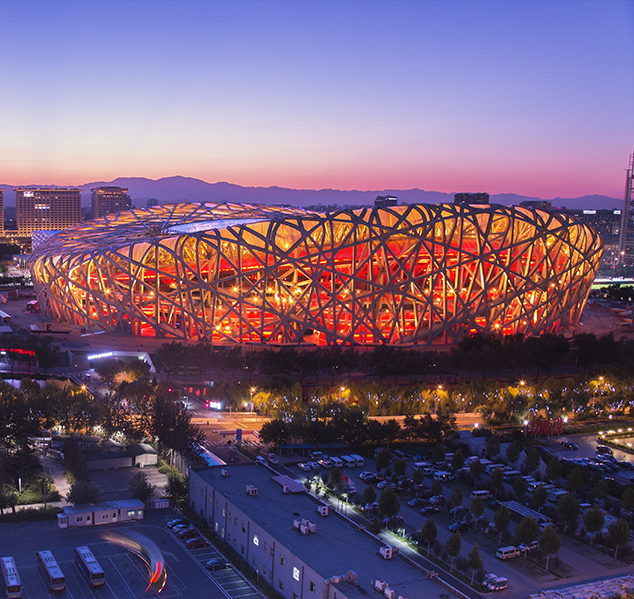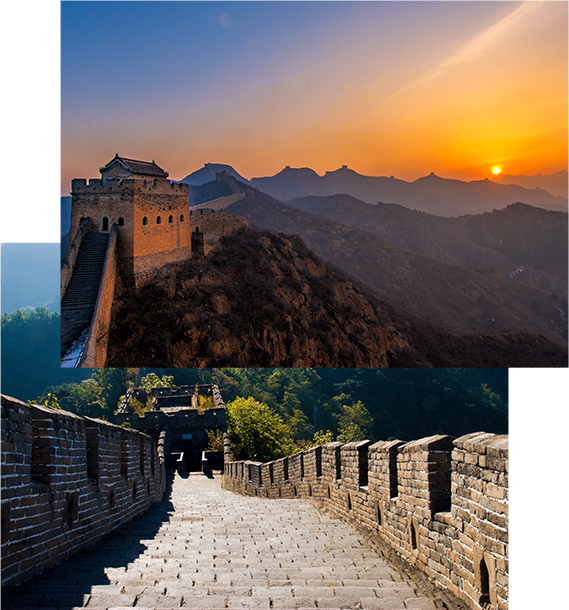About Beijing
Beijing is the capital of the People's Republic of China and one of the most populous cities in the world. The city is the center of National politics, culture, transport, tourism and international exchanges, which located on north latitude 39°56', east 116°20'.
Governed as a municipality under the direct administration of the national government, Beijing is divided into 16 urban districts. It is a major transportation hub, with dozens of railways, roads and motorways passing through the city, and the destination of many international flights to China.
Beijing is one of the Four Great Ancient Capitals of China. It has been the heart of China’s history for centuries. The city is renowned for its opulent palaces, temples, and huge stone walls and gates, such as the Palace Museum, the Summer Palace, the Geart Wall and Temple of Heaven Park. Its art treasures and universities have long made it a centre of culture and art in China.

About Temple Of Heaven
Temple of Heaven is located in the southeast of Beijing and existed for more than 500 years. Temple of Heaven was built for emperors of Ming and Qing dynasties to worship the heaven. Temple of Heave is the largest and best-preserved architectural complex for sacrifice in China.
Occupying an area of 2,720,000 square meters, the Temple of Heaven is slightly larger than the Forbidden City. There are two layers of walls around the Temple, dividing it into two parts: the inner enclosure and outer enclosure. The main buildings of the Temple include Hall of Prayer for Good Harvests, Imperial Heavenly Vault and Circular Mound Altar. The Hall of Prayer for Good Harvest has three concentric circles of massive wood columns symbolizing the four seasons, 12 months and 12 daily hours. The Imperial Vault of Heaven is a smaller circular building constructed without crossbeams; its dome is supported by complicated span work. The Circular Mound Altar is a triple-tiered white stone terrace enclosed by two sets of walls that are square outside and round inside, which are symbolic of the square earth and round heaven. Emperors of Ming and Qing dynasties held their ceremonies to worship the heaven in the Circular Mound Altar on winter solstice. Therefore the Circular Mound Altar also called "Heaven Worship Altar". The whole construction of the Temple of Heaven is made by wood so it is the architectural masterpiece of wood construction in China. Another marvelous and magnificent spot of the temple is Echo Wall. When standing in the center of the Circular Mound Altar, you can hear the bright sound which seems to come from the earth's core and sometimes from the sky.
The design ideology of the Temple of Heaven manifests broad and vast sky. As for the aspect of distribution of building, the inner enclosure is situated on the east of north-south axis of outer enclosure; the Circular Mound Altar and Hall of Prayer for Good Harvests is located on the east of the axis of the inner enclosure. This layout makes the west part of the Temple wider. As the largest building complex for worshiping heaven in the world, the Temple of Heaven was inscribed on the list of the World Cultural Heritage in 1998.
About The Great Wall
The Great Wall of China is called the "Ten thousand Ii Great Wall" in Chinese. In fact, it' s more than 6 000 kilometres long. It winds its way from west to east, across deserts, over mountains, through valleys till at last it reaches the sea. It is one of the wonders of the world.
The Great Wall has a history of over twenty centuries. The first part of it was built during the Spring and Autumn Period. During the Warring States Period, more walls were put up to defend the borders of the different kingdoms. It was during the Qin Dynasty that the kingdom of Qin united the dif ferent parts into one empire. To keep the enemy out of his empire, Emperor Qin Shi Huang had all the walls joined up. Thus, the Great Wall came into being.
The Great Wall is wide enough at the top for five horses or ten men to walk side by side. Along the wall are watchtowers, where soldiers used to keep watch. Fires were lit on the the towers as a warning when the enemy came.
Today the Great Wall has become a place of interest not only to the Chinese but to people from all over the world. Many of them have come to know the famous Chinese saying: "He who does not reach the Great Wall is not a true man."

About Renmin University Of China
Renmin University of China is a research-oriented comprehensive university focusing on humanities and social sciences. It is directly under the Ministry of Education of China andis jointly financed and supported by China’s Ministry of Education and the Beijing Municipal government. It can be traced back to Shanbei Public School, founded in 1937 in the midst of Anti-Japanese War. Later it became the North China United University, and then North China University. On December 16th, 1949, advised by the Political Bureau of the Central Committee of the Communist Party of China (CPC), the 11thAdministrative Meeting of the National Administration Council passed “The Resolution on the Establishment of Renmin University of China”. On October 3rd, 1950, the North China University was renamed as Renmin University of China. It was the first modern university founded by the People’s Republic of China.
In over 70 years of history, from Shanbei Public School to Renmin University of China, more than 200,000 talents were trained and more than 4000 foreign students studied at this university. Today, Renmin University of China has developed a multi-dimensional and multi-level teaching and research structure, encompassing undergraduate education, graduate education, and adult education to cultivate all kinds of high-level talents. Renmin University of China is now on the way to build itself into a world-class university with distinctive features and major international influence.
